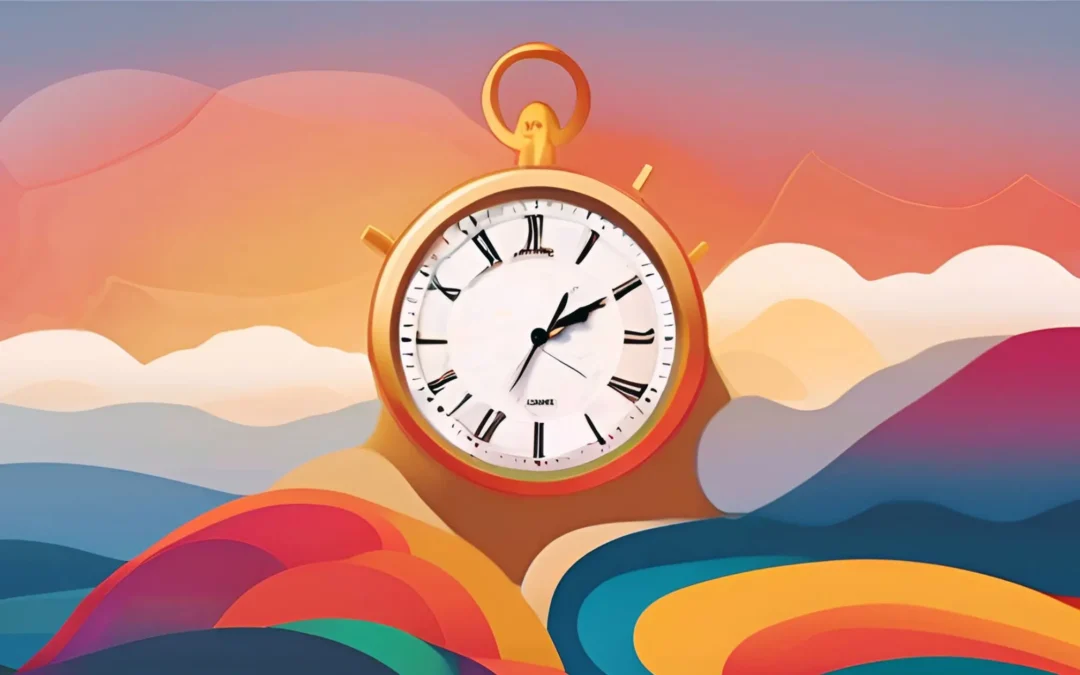Most people take a result-driven approach to their productivity method, focusing on completing a particular task to get a specific result. Results are important, but even with the best intentions and strategy, we don’t always get the result that we want. Focusing exclusively on the results that we desire puts a shadow on the steps to make it a reality.
Instead, we need to conduct frequent experiments like a mad scientist. When we focus on the quality of our inputs, getting the results that we want becomes natural, more likely, and rewarding. We appreciate our progress, test ideas rapidly, and see the connection between our efforts and reaching specific goals.
In this article, I’ll share three ways to increase your productivity: how to get the most out of your time, set goals like a champ, and balance your professional and personal goals.
Result vs. Process Productivity Methods
There is an ongoing debate about what is more effective: process or results.
Here’s a cheat code—if you want to achieve more, a process-driven productivity method is the best approach. Some characteristics are that it’s agile and holistic. It incorporates not just the things you want to accomplish professionally but also your personal goals.
Why have you been getting stuck or frustrated?
The result-oriented culture that we live in has taught us to value the outputs of life more than the inputs. It’s external markers of success like reaching a sales goal or publishing a book and having millions of readers right out of the gate.
Goals like these can be helpful to metrics, but they are only the first ingredient of being productive. Examining the full spectrum of our efforts, even if we aren’t “successful,” is the opportunity to shift into a more enlightening productivity method.
Outcomes are Teachers
In my book Productivity Techniques, I talk about how outcomes are different from results. They are what we learn from our efforts. You can think of them as the result of a result.
Many people ask if the learning process is more important than the end result. Chasing results can blindside us on the experience we are going through—who we become, the choices, decisions, and the character-building that comes with pursuing our goals.
What we learn is far more useful than the results if we are willing to examine it. It doesn’t come easy, though. A sense of pain is paired with not reaching our goals. And when do we succeed? Well, we’re great then, so there’s no need for analysis.
Anytime we put an effort or intention to do something differently, this input leads to an output distinctly different from the result we may or may not achieve. It’s how we learn. It’s our history. Our teacher.
Input always equals output, no matter if we don’t reach the results that we want. Why? When we take action, there is always an opportunity to learn something new—a clue that will help us improve the next time we try again.
1. How to Use Your Time
Most people make the mistake of working too long and get burned out. Working in intervals is the best way to complete tasks. It allows you to focus deeply on everything you have for a limited time; then you get to rest.
The core idea is to work for less time but more frequently. Breaking up big projects into intervals does wonders for your emotions. You become attached to completing the time instead of chasing a result. You create a cycle of wins.
In addition, when you hit the timer, you’ll be amazed at how it creates positive urgency, unleashing creativity and focus that open-ended work can block.
Working in intervals is the best way to complete tasks. They are highly focused on specific tasks but have a clear beginning and end. It’s a quantifiable in and out that creates separation from the emotions surrounding the result that we want.
Holding ourselves accountable to time rather than results frees us to focus on what’s in our control. When our stopwatch ends, we can take a break and move on to other activities with a sense of accomplishment.
We feed our emotions even if we are far from reaching our goal.
2. How to Set Goal the Right Way
The first mistake that highly productive people make with goal setting is that they lump all of their goals together. There are two distinct goals types that no one will tell you about: deep goals and sprint goals.
Your big picture goals are your deep goals. They take long periods of time to achieve. They are things like having an amazing relationship or a highly successful business. Sprint goals take one step to complete. They are tangible, and are the steps to reaching your deep goal.
Big picture goals are abstract and bold. They’re hard to accomplish. Why? Because they are elusive. We think of them in abstract and aspirational language. Our thought process does not give us clues to reach them. They are soaking in emotions.
Do you want to get better at setting goals?
Break your goals down into digestible bits, separating them more clearly than you ever have before. Become an expert at extracting the small components that are task bound, actionable steps you can quantify. These are sprint goals.
Use timed intervals to work on them incrementally, without losing perspective of your deep goal in the process. Reward yourself for making consistent progress on specific activities that are related to your deep goals.
3. How to Stay Balanced
We need to take a 360 view of our productivity. We need to be holistic, being intentional with each area, we give ourselves clear things we can work towards. We feel more fulfilled because we are working on the individual parts and whole that make up who we are.
All too often we focus on being productive at work and forget to prioritize the other aspects of who we are. We don’t make time to feed our souls because our bank account is yelling at us. But our needs are more dynamic than that.
We can work as hard as we can and get burned out. What’s missing isn’t firing off another email or adding an extra zero to your bank account. It could be a bike ride, a phone call to a friend or family member, or a date with your spouse.
We have a dimensional experience. When we make time for it, we become happier and more fulfilled. Work is important, but it’s not the only thing that drives our soul. The game we need to play is stacking up time in the five categories of life, our goal channels: health, work, relationships, community, and spirituality.
Compartmentalizing who we are at work, at home, and in our community—it leads to disjointed lives, behaviors, and personalities. We need to be who we are everywhere, in the sense of goals, vision, and purpose.
The next level is integrating it all. When we can incorporate what we do in all areas—the degree to which we can do this—will determine our balance and harmony.
Focusing on Quality Inputs
Regardless of your productivity method, focus on using your time on specific tasks using timed intervals. Break apart your short-term and long-term goals clearly, and create balance by focusing on all the areas that make up who you are, not just work.
When you want to be productive, what you’re really after is achievement. The problem is that no one told you the recipe for achievement has three ingredients: results, outcomes, and feedback.
Most people only focus on results. We can make our best attempt, but we still miss our targets. When this happens, it doesn’t mean we failed. It means we are learning. Our prime focus should be on the variables that we can control: quality inputs.




